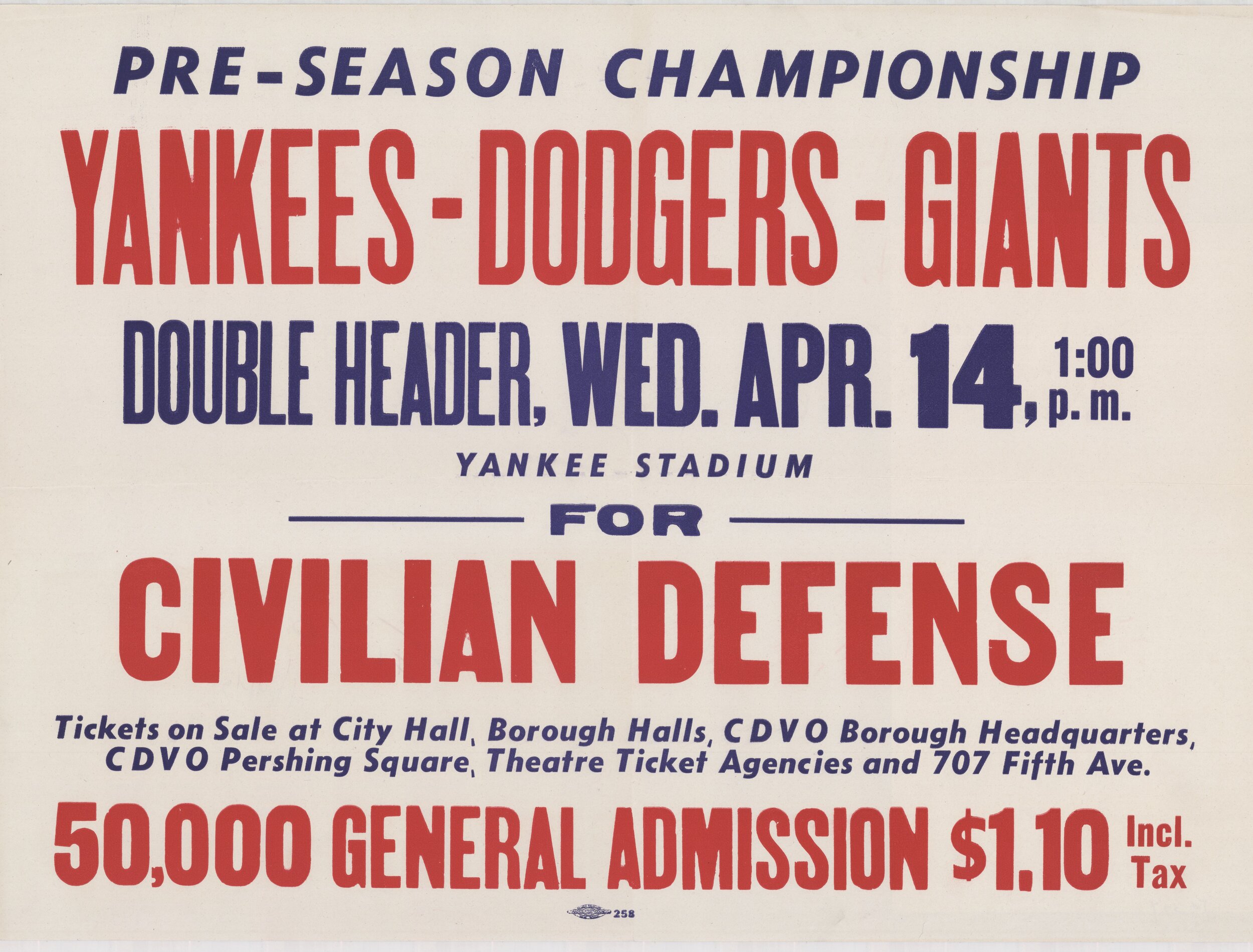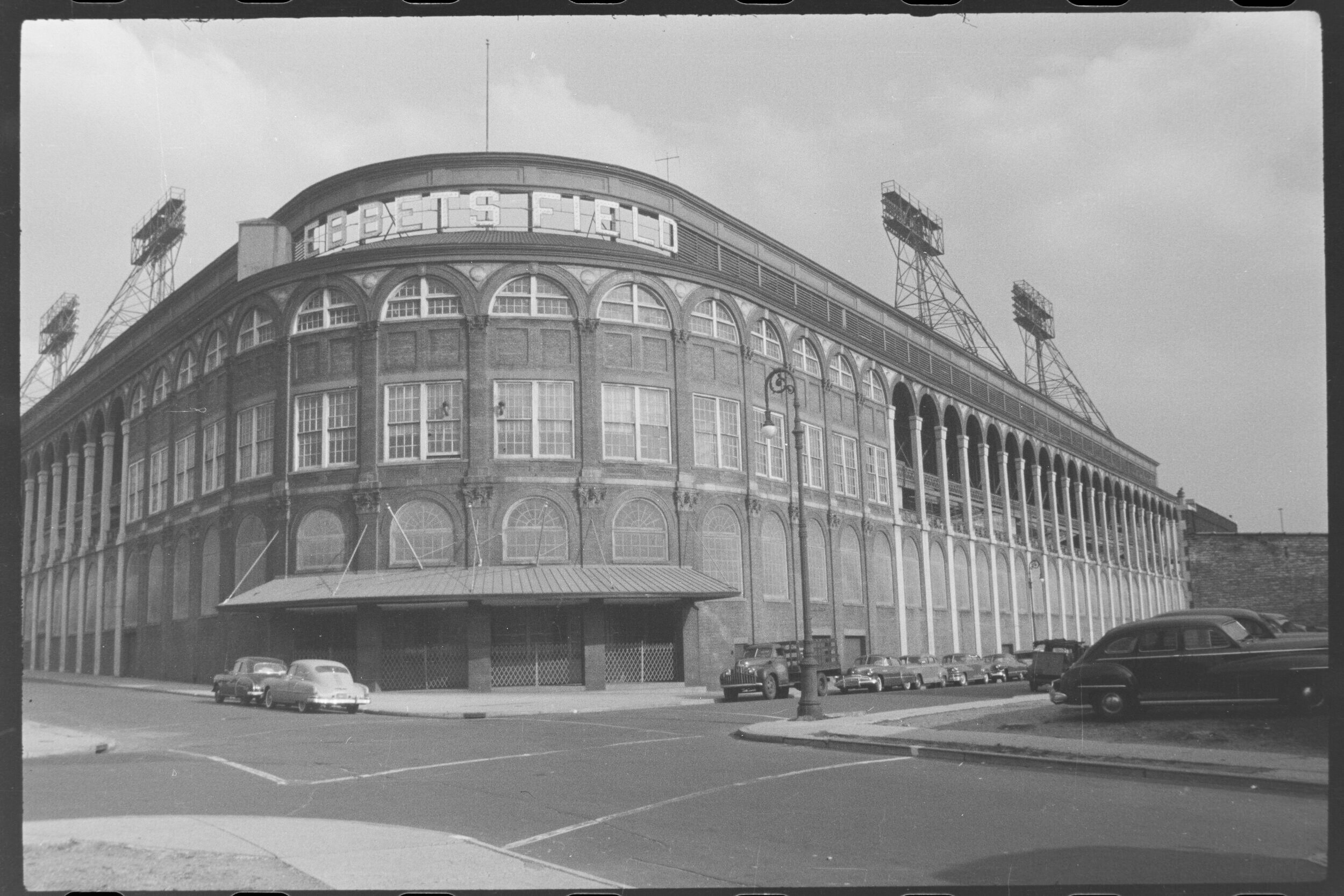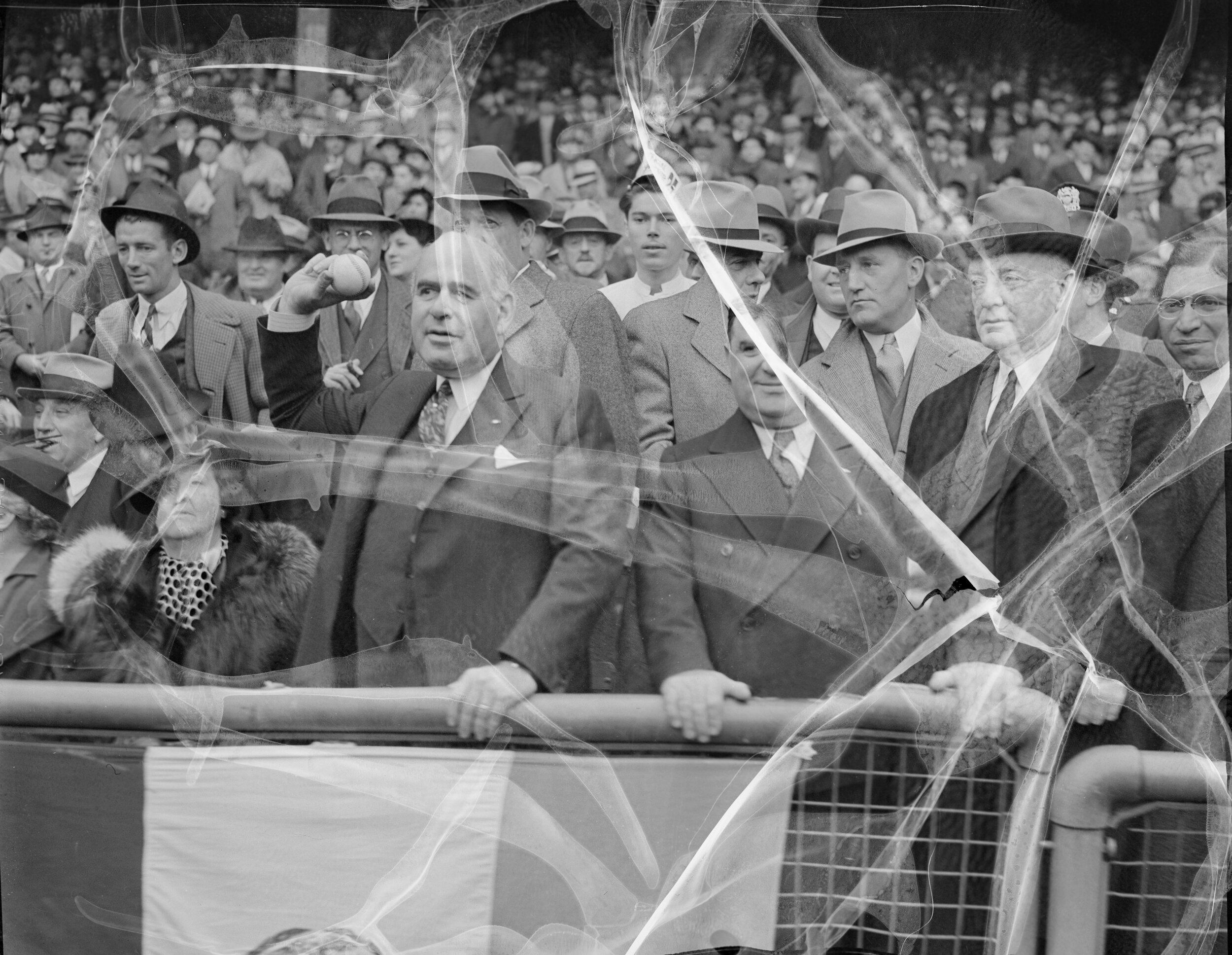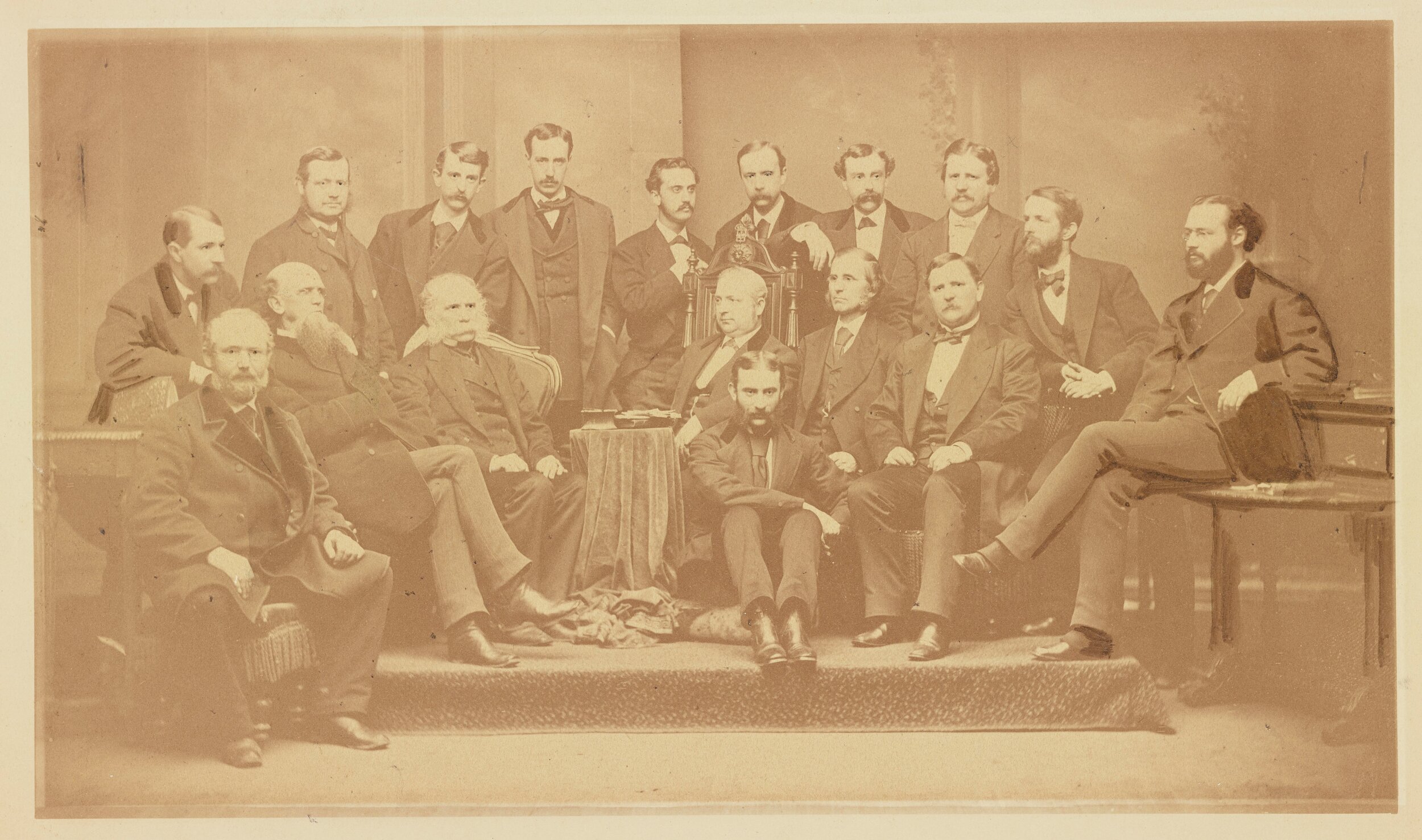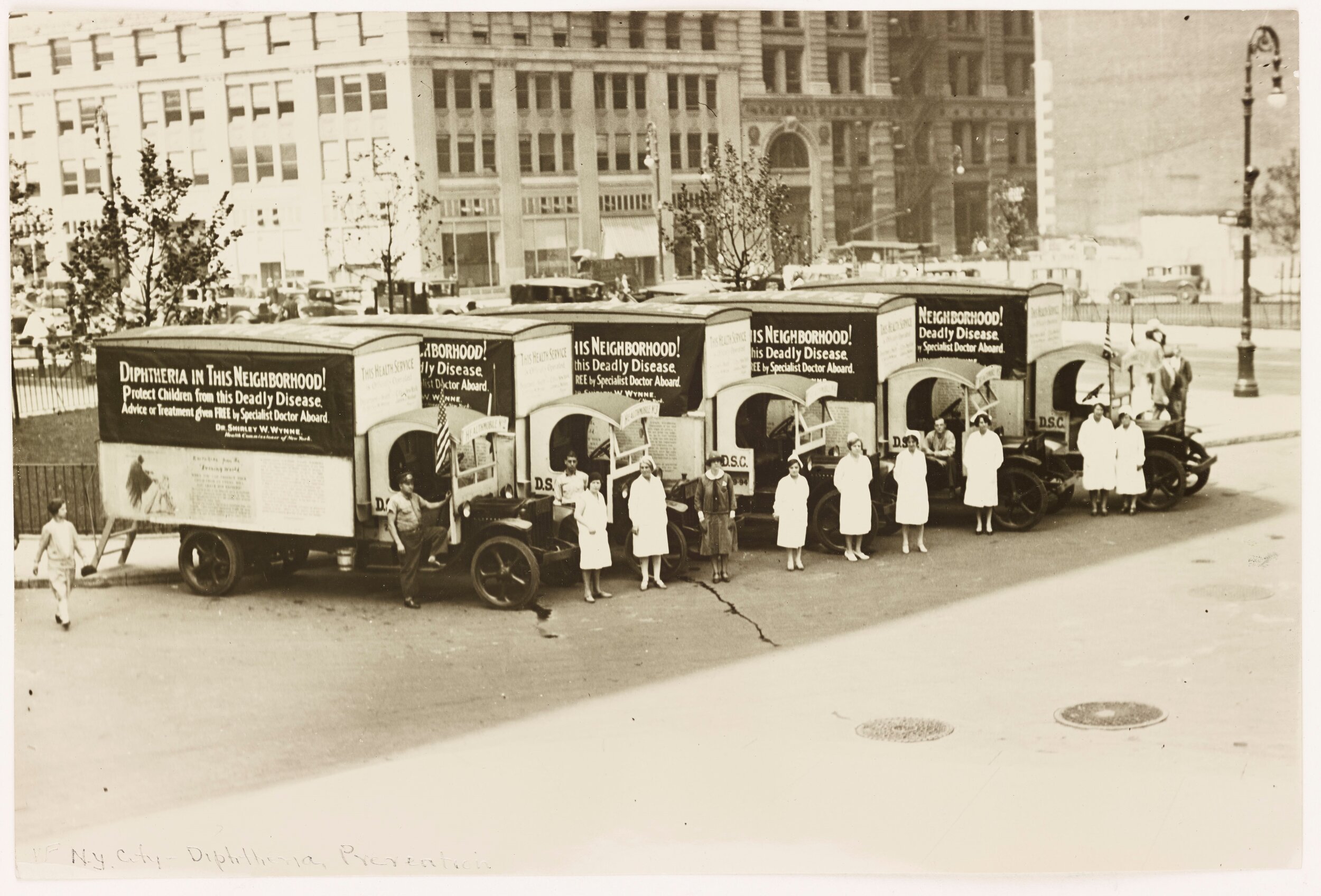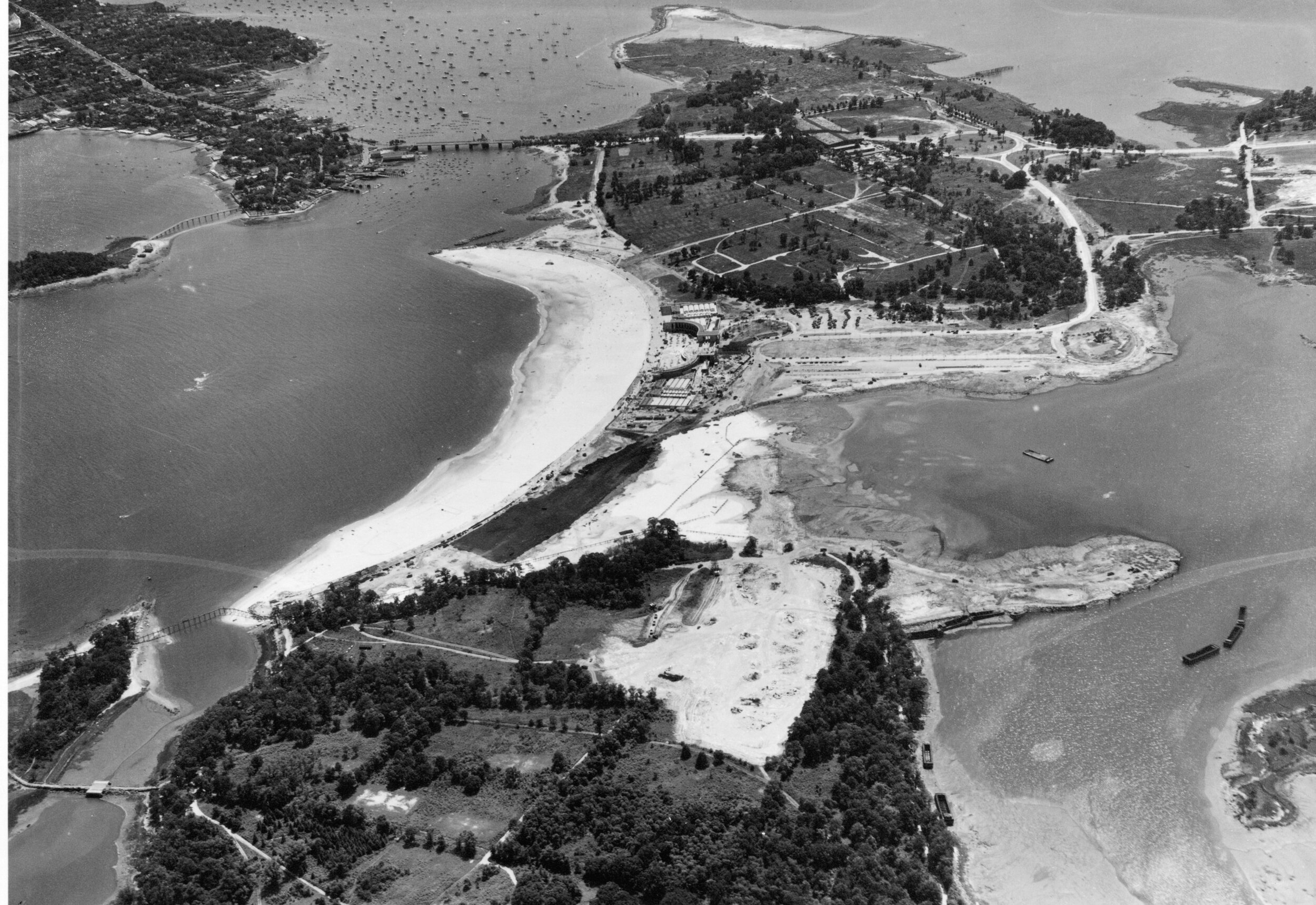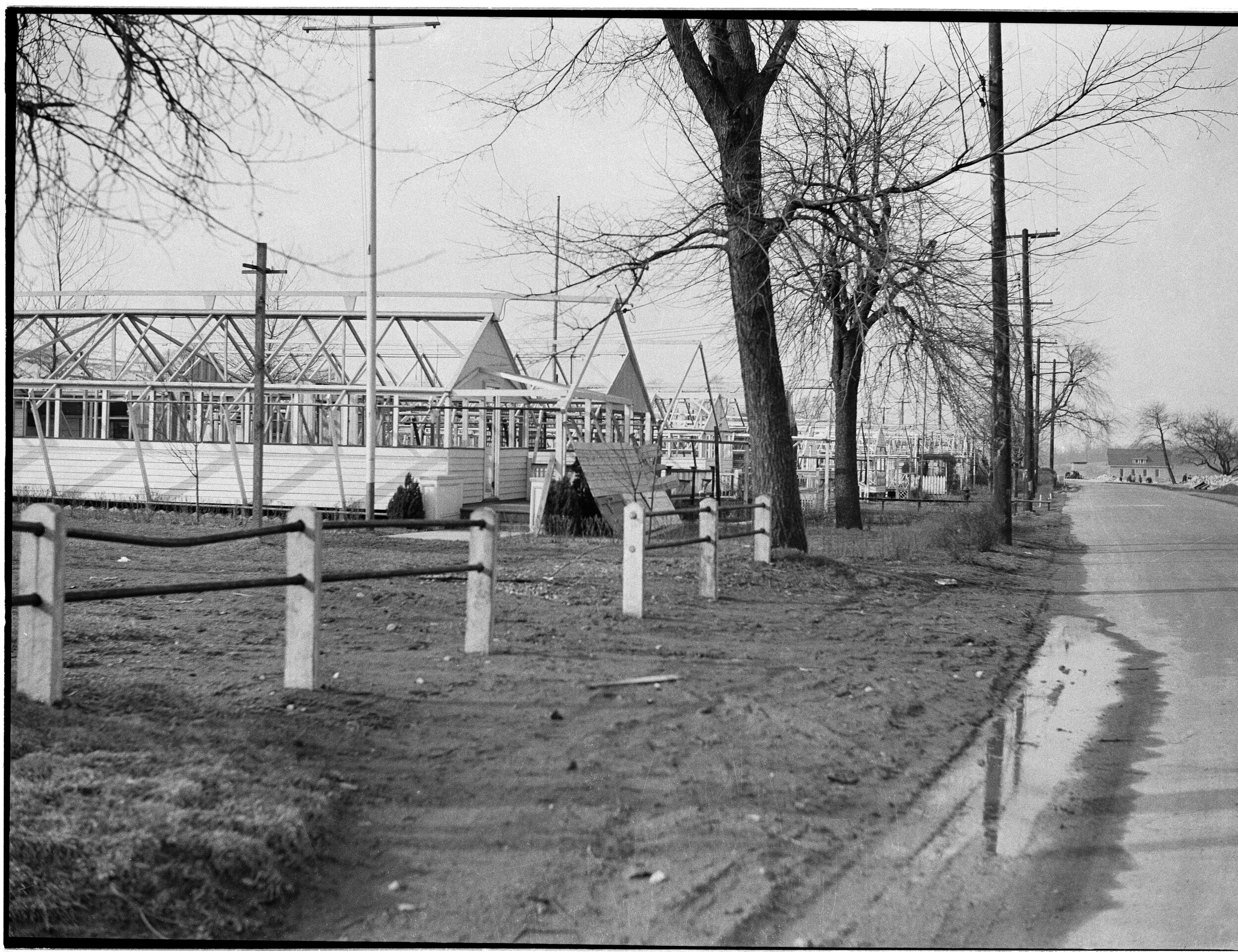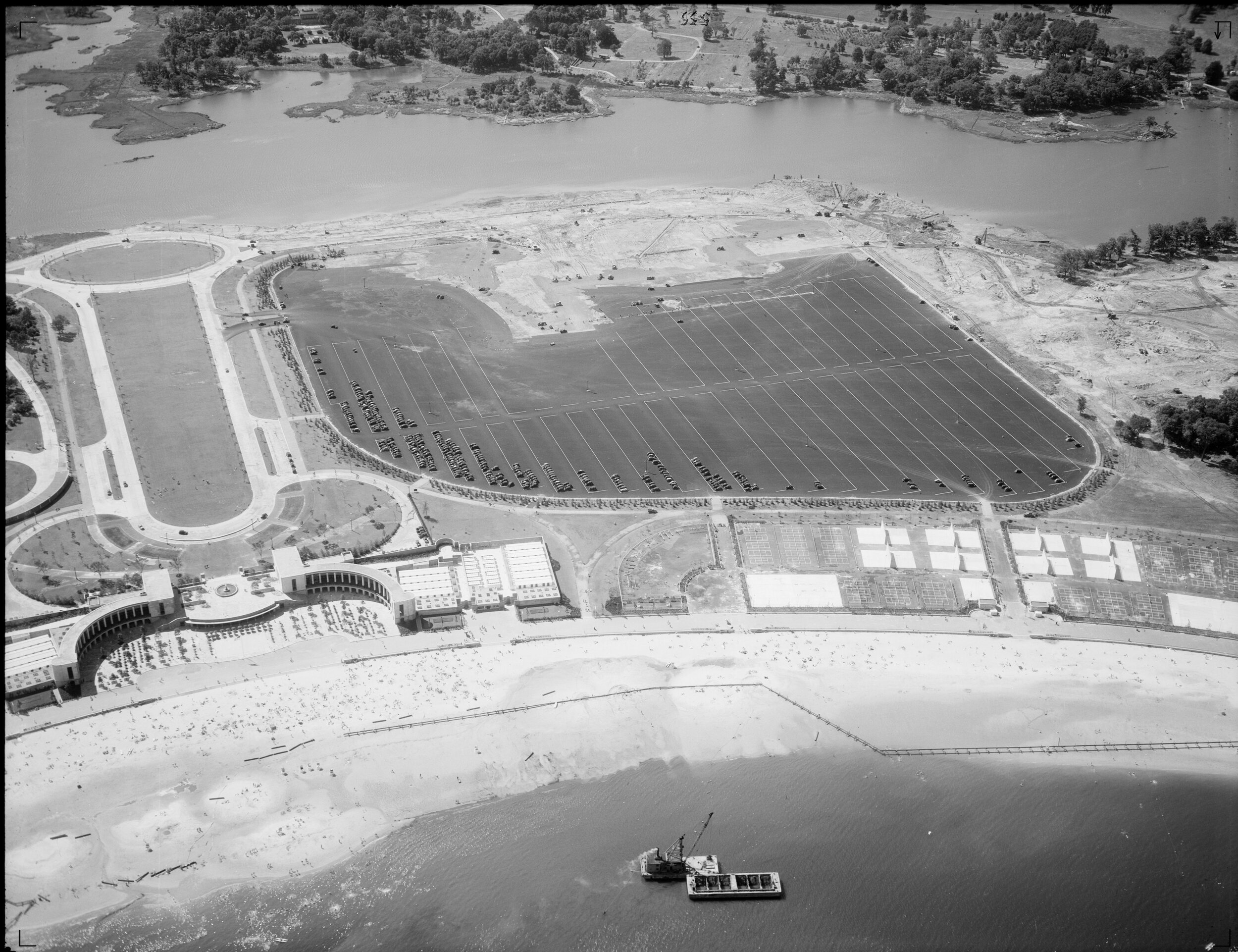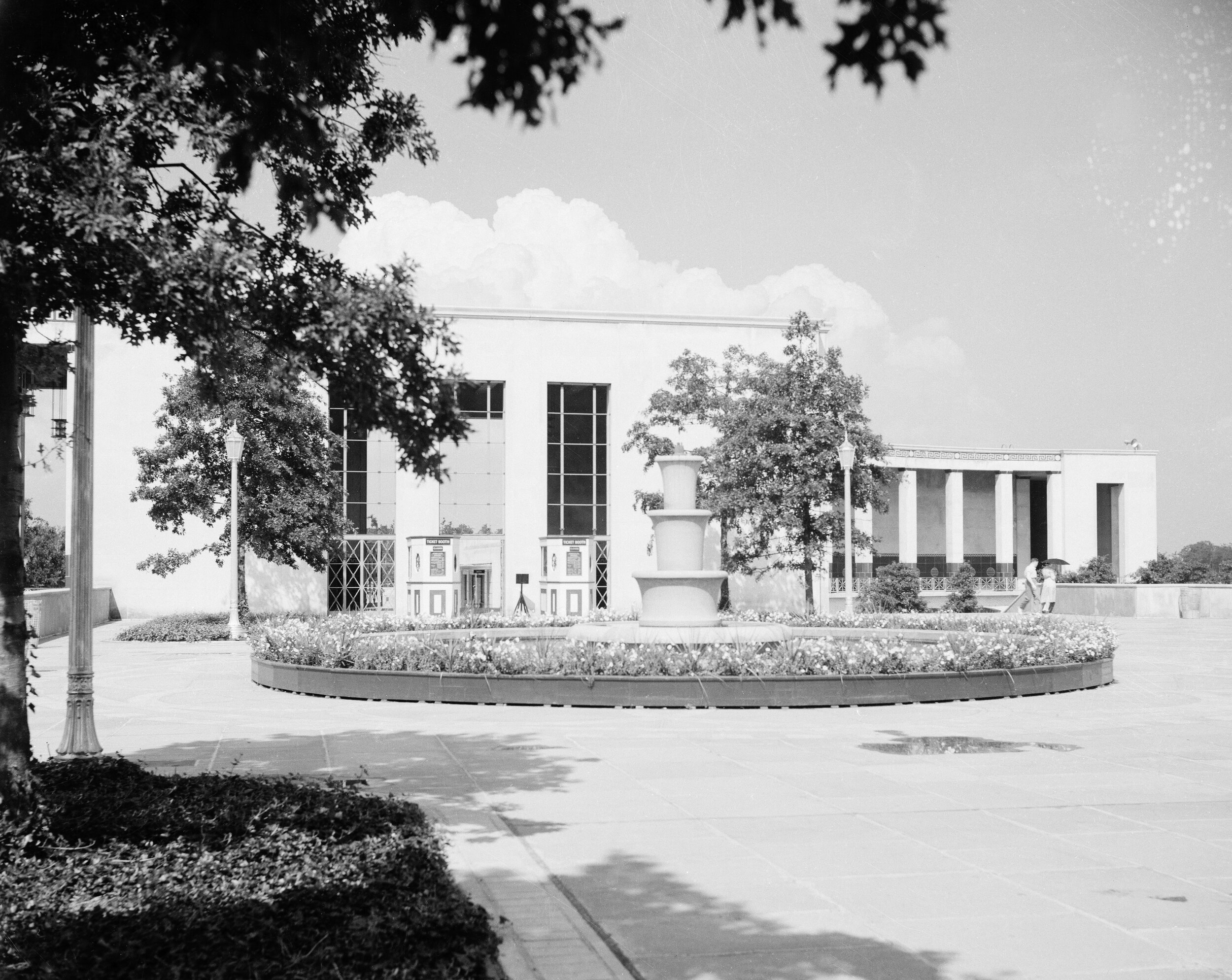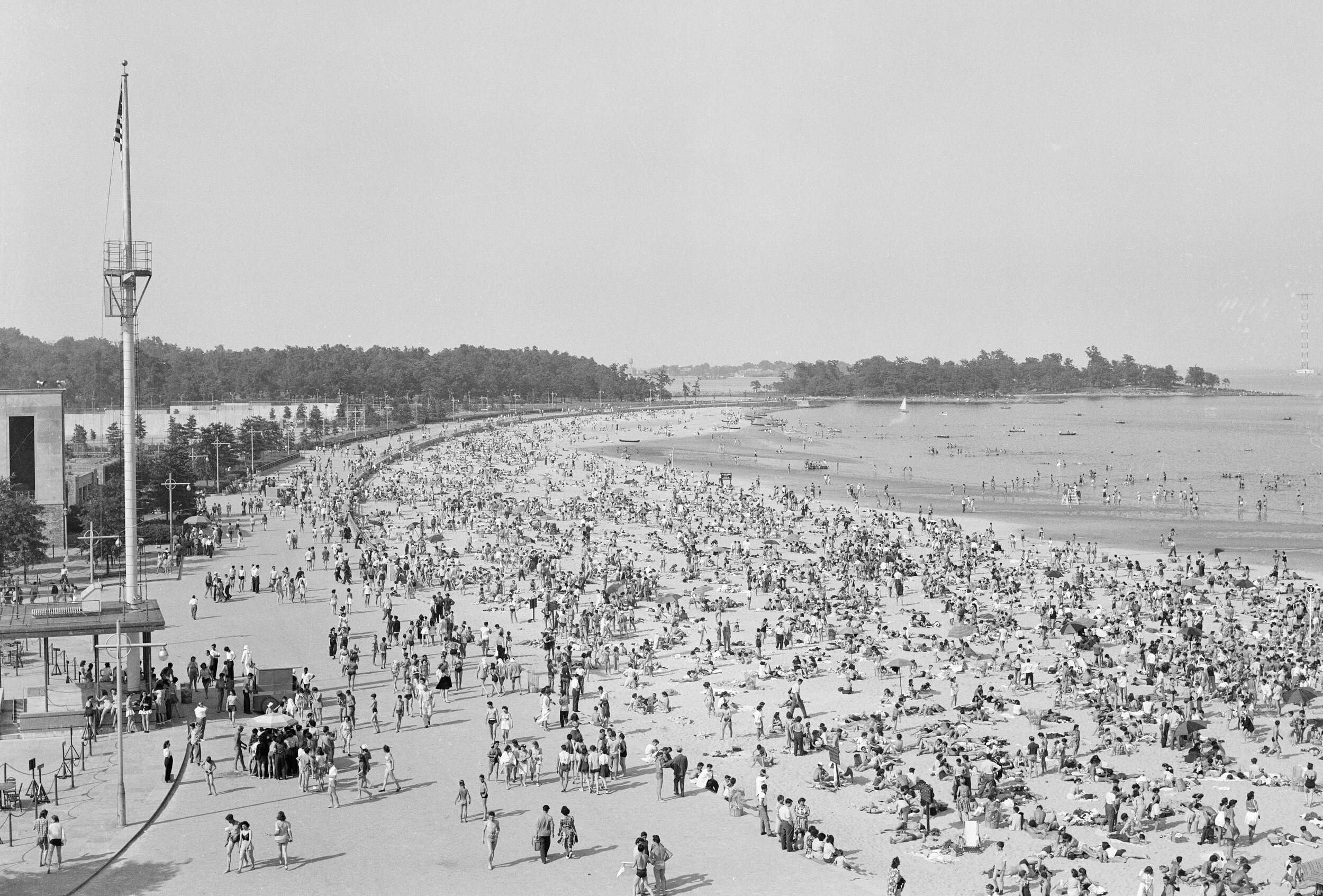On January 17, 2020, we introduced the Municipal Archives Conservation Unit’s latest project, “Conserving Central Park and Brooklyn Bridge Plans.” Before the Archives temporarily closed in mid-March, project conservators had devised some innovative protocols for treating the oversized plans (up to 36’ in length!) in these two iconic collections.
The project is funded by the New York State Library’s Conservation/Preservation Program. The goal is to perform the necessary treatments so that the drawings can be stabilized for improved storage, either rolled, or housed in new 7-foot long flat file drawers.
Conservator Clare Manias examines a 14-ft. Brooklyn Bridge drawing. NYC Municipal Archives.
Project conservators began with the oversize Brooklyn Bridge items. Drawings this large present a unique set of challenges. Routine treatments, transporting the drawings, photographic documentation, and use of available workspace all need to be approached differently. It became clear that we would need to think creatively to make the most efficient use of our time and workspace.
The constraints imposed by the size of the drawings means something as trivial as moving a drawing to the conservation laboratory requires three people. One person opens the doors and ensures the hallway is clear. The other two conservators load the drawings—usually 3 or 4 at a time—on a rigid foam core board which is carried by hand to the laboratory. The size of these drawings and the fact that they are currently housed in Mylar sleeves also makes them very heavy! In the laboratory they are placed on an extra-long table that can accommodate two drawings side by side. Two smaller tables that are on castors can also be pushed together to create another long table to accommodate some of the smaller drawings.
With these constraints in mind, we decided to batch our documentation photography, surface cleaning, and media testing as a “phase one” in treating the drawings. The basic “batch” process is as follows: we photograph a drawing, then while it is still in place on the table, we surface clean it, and test the solubility of the media. We also take notes on the condition of the drawing. Combining these tasks limits how often we need to transport the drawings to and from storage.
It is important to document the process of conservation treatments. Ethically, it is necessary for conservators to leave written and photographic documentation of the treatment that has been performed as a reference for future conservators. The photographic images taken during this process may be the only way for patrons to view the drawings, given their size and fragile state.
The size of these drawings required us to adopt innovative methods for the photography part of the project. Ordinarily, for small objects, a handheld camera or a camera on a copy-stand would suffice; however, these drawings are too long for that method. The majority of the drawings range between 6-to 15-feet in length and are about 2-to 3-feet wide. It is just not possible to capture the entirety of the drawing in one image, thus we shoot the recto and verso of each drawing in sections and later merge them together in Photoshop to create a panorama of the entire work. To successfully do this, we need to make sure that the images are all taken from the same angle, with the same settings, so that they will seamlessly align.
Conservator Sara Bone photographs an oversize Brooklyn Bridge drawing with the camera on the mono-stand, LED lights, and light reflection board. NYC Municipal Archives
The key piece of equipment for this type of photography is the mono-stand. The mono-stand allows the camera to be positioned about 9 feet above the floor, and the height can be adjusted, as needed. It is also on wheels, so it can easily be moved along each section as we take pictures. Blotters covering the table surface provide a clean, consistent background for the image and help to maintain contrast against the items we are photographing. The height of the camera on the mono-stand is adjusted based on the width of the drawing. A drawing with a smaller width means the camera can be closer to the object to have it fill out the frame. It is generally best to have the camera slightly zoomed in because when it is fully zoomed out it has a tendency to give a “fish-eye” effect, which makes stitching together the panorama more difficult.
With the camera positioned high up on the mono-stand, we need a stepladder to reach the shutter button! While there are some systems that sync the camera to a computer to remotely release the shutter, this is not possible with our setup.
Another vital piece of equipment are LED lights with softboxes that provide consistent diffuse light to ensure that the images are as accurate as possible. The overhead lights are turned off during photography because they have a warmer temperature light and do not provide even lighting. We rely primarily on the LED lights, although there is natural light that comes through the windows as well. A color bar is inserted into each of the photos so that in post-processing we can adjust the white balance and make sure the color information conveyed is accurate.
Because the drawings are placed on a table and the lights can only be positioned on one side of the table, the top edge of the drawings appear more in shadow. To aid in the way light reaches all areas of the image, we created our own light reflection board. A sheet of blotter was mounted to a rigid board and propped up on stands. When placed on the other side of the drawing on the table, this allows the light to bounce off the white blotter and reflect back onto the drawing. We move the light apparatus along with the mono-stand as we take the photographs at regular intervals, capturing every section of the drawings. Two people position the lights and reflection board while a third person is up on the stepladder taking the picture. Usually all three pairs of hands are needed to carefully flip the drawing over so the other side can be photographed.
In Photoshop, the images are adjusted for white balance and then cropped close to the borders of the drawing. The “Automate: Photomerge” function is used to automatically align the images into a panorama. Manual adjustments can then be made as needed.
Brooklyn Bridge drawing 4121-G, section. NYC Municipal Archives.
Following photography, with the drawing still out on the table, we begin the surface cleaning of both sides, using a soot sponge. The sponge lifts up the surface dirt without being too abrasive on the paper. Many drawings are so dirty that we see a dramatic difference as we clean! After surface cleaning the media is tested to see if it is water-soluble. Testing media is an important step because we need to check whether the ink is stable. We would like to wash as many of the drawings as possible to remove acids and other harmful byproducts in the paper. To test the inks and other media, we drop a small bead of water on an obscure section of the media to see whether the ink will bleed or if any lifts off when pressed with blotter.
Finally, we take notes on the condition of the drawing which completes phase one of treatment. Each drawing is then wrapped in acid-free buffered tissue and moved to temporary storage to await phase two, which will include more targeted treatments such as washing, mending, and lining. Using our batch treatment protocol we will photograph, surface clean, and media test the 78 Brooklyn Bridge drawings in an organized and efficient way.
We are looking forward to resuming the oversize drawings conservation project when the Archives re-opens. Look for updates in future blogs.



